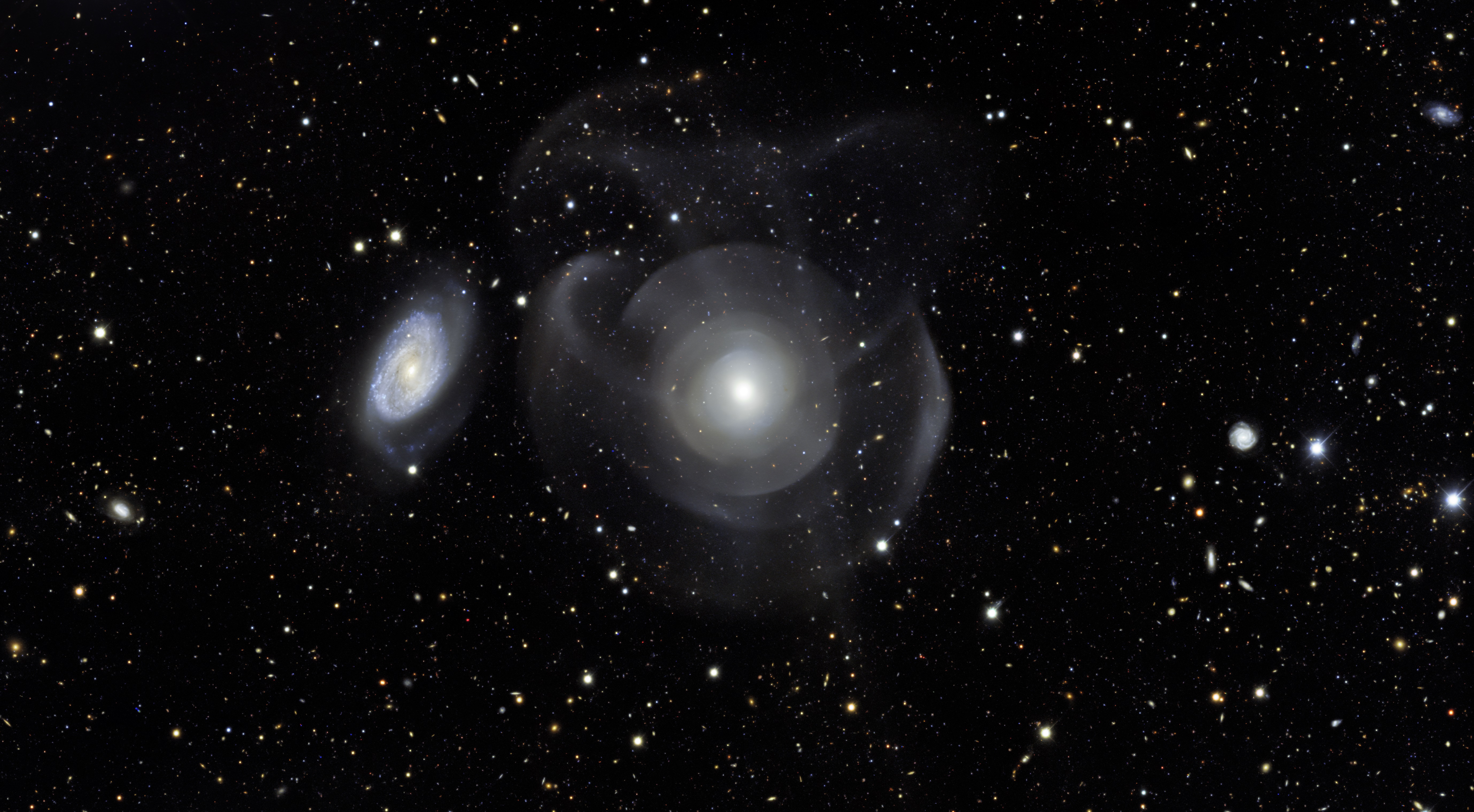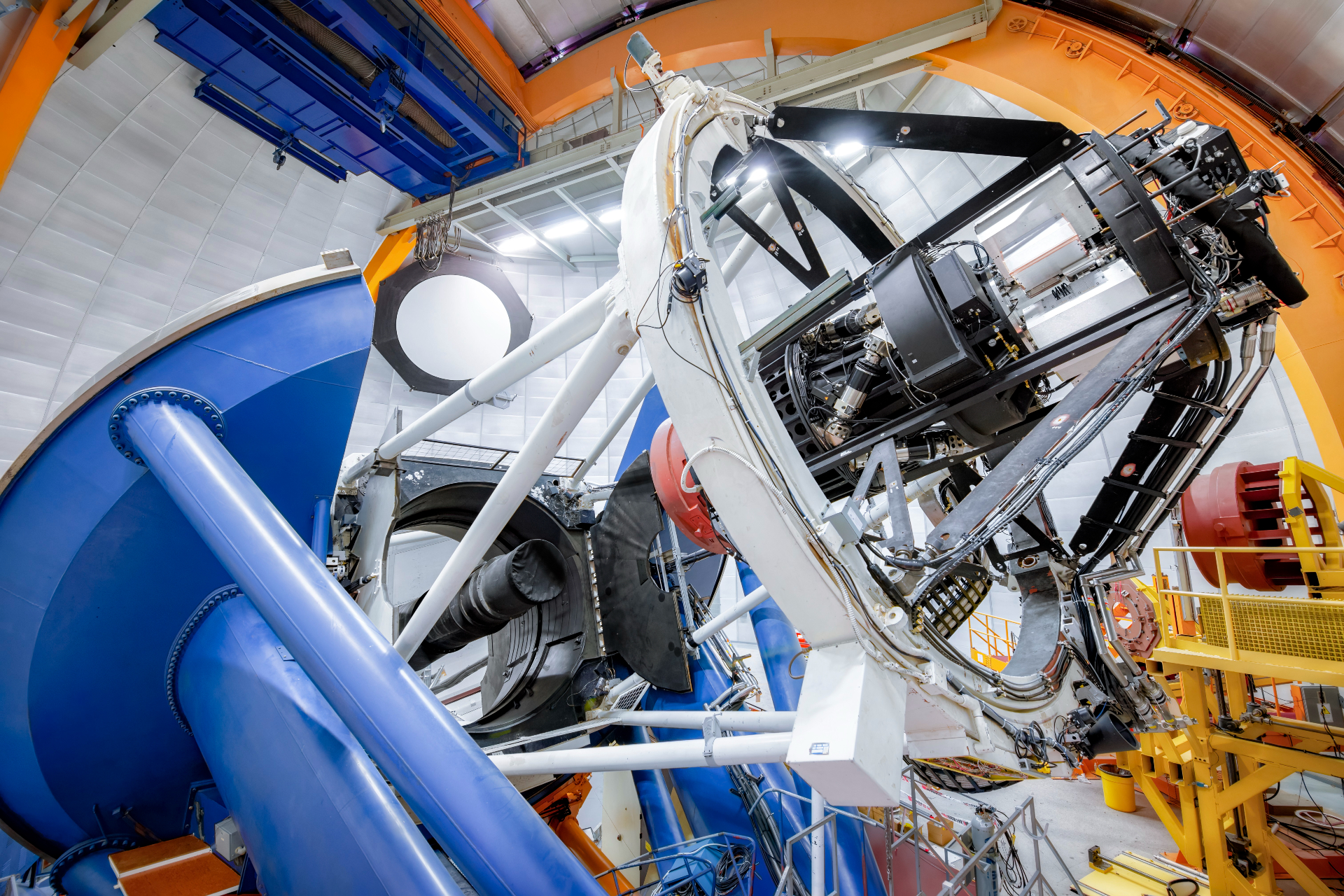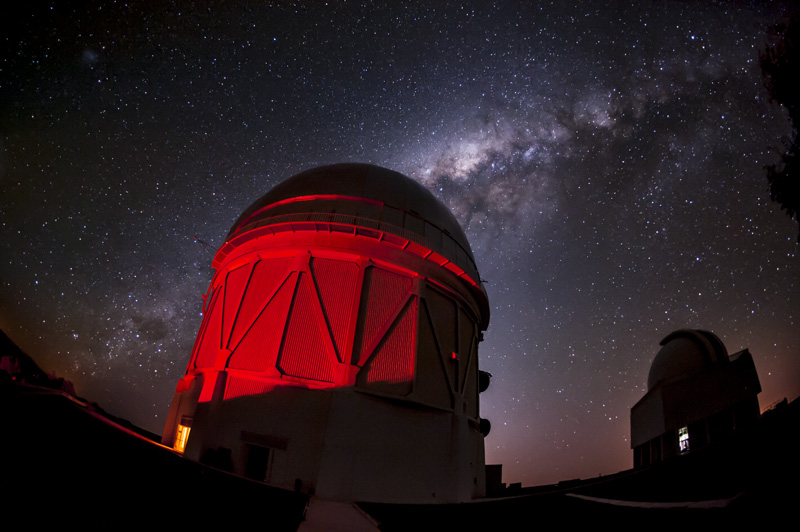
The Dark Energy Survey (DES) has published its second data release (DR2). The culmination of six years of astronomical data collection and analysis, the publication of DR2 was announced at the 237th Meeting of the American Astronomical Society, held virtually this year. The full data release is now online and available to the public.
The ultimate goal of DES, a global collaboration of more than 400 scientists from 26 institutions, is to understand dark energy and its role in the accelerating expansion of the universe. To do this, DES has collected images of hundreds of millions of galaxies and thousands of supernovae. During its six-year mission, DES surveyed one-eighth of the sky and finished collecting data in January 2019.
“DES has imaged millions of galaxies at different stages of cosmic evolution,” says Bhuvnesh Jain. “The release of the full DES data is a big deal for the astronomy community since it is one of the largest and best calibrated datasets of stars and galaxies.” Here at Penn, DES research efforts are led by Jain, Gary Bernstein, Mike Jarvis, and Masao Sako with the help of graduate students and postdocs.
DR2 contains all six years of data collected by DES and represents one of the largest astronomical catalogs published to date. It includes nearly 700 million astronomical objects and, because it is accessible to the public, can now be used for verifying previously published studies as well as enabling new avenues of research.
One technical contribution made by Penn researchers for DR2 was refined-calibration techniques and improved algorithms for processing images. Bernstein helped develop automated processes for precisely mapping the locations of images collected, and Jarvis worked on algorithmic improvements for image-blur correction. “The DES DR2 represents not just a step forward in the quantity of sky measurements but also in their quality. This is the most accurate and reliable catalog of any sky survey,” says Bernstein.
Data from DR2 are now being used to create an updated map that will improve estimates of the amount and distribution of dark matter in the universe. Previously, DES researchers produced the largest and most accurate dark matter map to date using galaxy weak lensing. A new map, one that will be three times larger, will be released in the near future and will be used to address key questions about the expansion rate of the universe.
Additional studies made possible with the full dataset, to which DES collaborators have had access in advance of its public release, include the ability to study how galaxies have changed since earlier periods of cosmological history by connecting new results with measurements of cosmic-microwave-background data, signals from the earliest moments of the universe’s formation. “Having more galaxies means better statistics,” says Jarvis. “We think this data should be some of the most precise measurements of cosmology over the last half of the universe.”
In addition to investigations of dark energy, DES data have been useful for studying a wide variety of cosmic objects. At Penn, highlights include the discovery of DES16C2nm, the largest superluminous supernova explosion ever detected, evidence of dark matter “halos”, and the detection of a kilonova, a merger of two collapsed stars. Data collected by DES also led to the discovery of a new distant dwarf planet and identified new trans-Neptunian objects.
“In the next two years, DES will produce the most precise measurements of how cosmic structures have grown via gravity,” says Bernstein. “These will in turn provide stringent tests of the standard model of cosmology—that the universe is composed primarily of dark matter and dark energy, acting as a ‘cosmological constant’ that accelerates the expansion of the universe.”
The Dark Energy Survey is supported by funding from the Department of Energy’s Fermi National Accelerator Laboratory, the National Center for Supercomputing Applications, and the National Science Foundation’s NOIRLab. A complete list of funding organizations and collaborating institutions is at The Dark Energy Survey website.
Gary Bernstein is the Reese W. Flower Professor of Astronomy and Astrophysics in the Department of Physics and Astronomy in the School of Arts & Sciences at the University of Pennsylvania. As the project scientist for DES, Bernstein played a crucial role in the calibration of the DES camera and was involved in planning the observations.
Bhuvnesh Jain is the Walter H. and Leonore C. Annenberg Professor in the Natural Sciences in the Department of Physics and Astronomy in Penn’s School of Arts & Sciences. Jain co-led the effort to map dark matter using gravitational lensing and chairs the DES Advisory Board.
Mike Jarvis is a research scientist in the Department of Physics and Astronomy in Penn’s School of Arts & Sciences. He is the co-coordinator of the Shear Pipeline Development and Testing group and an active member of the Weak Lensing Working Group.
Masao Sako is a professor and undergraduate chair in the Department of Physics and Astronomy in Penn’s School of Arts & Sciences. Sako co-led the DES effort to measure the expansion of the universe using distant stellar explosions and was also the co-coordinator of the Supernova group of DES in collaboration with Larry Gladney.
Graduate students and post-docs from Penn who are working on DES are Pedro Bernardinelli, Cyrille Doux, Dillon Brout, Marco Gatti, Rebekah Hounsell, Shivam Pandey, Helen Qu, Marco Raveri, Carles Sanchez, Helena Sanchez, Lucas Secco, and Tae-hyeon Shin.









